Sweden's Sweet Tooth
A small shop in central Sweden has been making peppermint sticks for generations of Swedes.
-
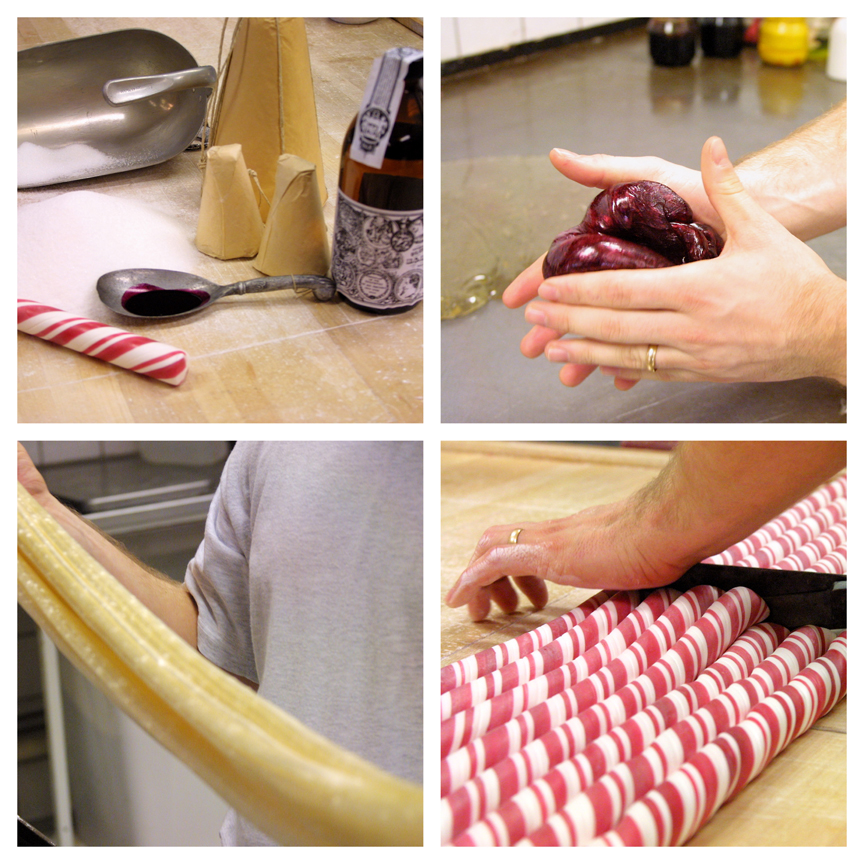 Mass produced but still made by hand using the original 19th century recipe. Photo: Martin Miller
Mass produced but still made by hand using the original 19th century recipe. Photo: Martin Miller -
-
Sweden is sweet on sugar. And peppermint candy is no exception. In fact, a small shop in central Sweden has a big history with the favorite sweet.
Six generations ago in Gränna in Småland, Amalia Eriksson was widowed just weeks after her daughter, Ida, was born. Amalia started making candy called "funeral sweets" and requested permission from Gränna’s mayor to increase her business and produce "polkagrisar." It was 1859, a time when it was quite extraordinary for a young woman to go into business for herself.
The reason behind the name of the now legendary candy isn’t entirely clear, but in 1859, the polka was a popular dance. The word “gris” is Swedish for pig, but it also means “something special” perhaps a Christmas treat, and in Gränna, it’s a local term that means “a bit of candy.” -
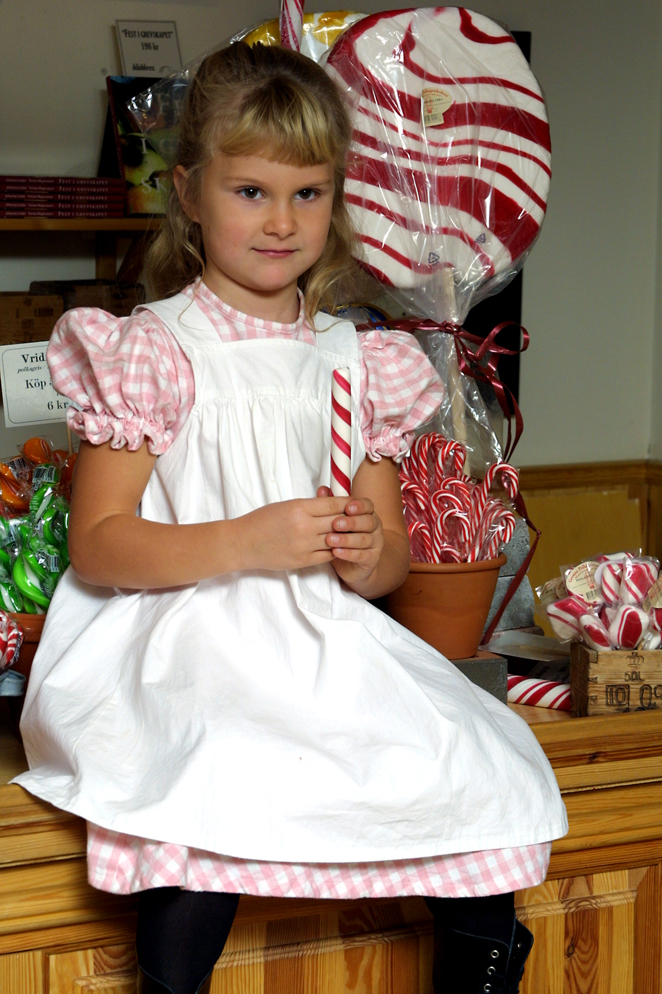 So much to look at, it makes one tired... These red- and white-striped peppermint sticks may look like candy canes, but 156 years ago, a single mother in central Sweden started “mass producing” these sweets as “Polkagrisar.” And not much has changed since then ... except the ever-increasing number of fans.Photo: Martin Miller
So much to look at, it makes one tired... These red- and white-striped peppermint sticks may look like candy canes, but 156 years ago, a single mother in central Sweden started “mass producing” these sweets as “Polkagrisar.” And not much has changed since then ... except the ever-increasing number of fans.Photo: Martin Miller -
-
Originally, Amalia stored the red- and white-striped candy sticks with a taste of peppermint in a chest of drawers in her house, which still stands at Brahegatan 2 in Gränna. She was the sole producer of the candy until her death in 1924; Ida continued her mother’s business, and eventually shared the secrets of the polkagris recipe, though its origin remains unknown — it may have come from Germany. Today, Grenna Polkagriskokeri is housed in the building at Brahegatan 39 that Greta Nordstedt lived in; she was the first non-family member to learn the secrets of the business and sold the candy in her husband’s grocery store, which was also at the same address.
-
 The great-grandchildren of one of Gränna's residents peek in to watch the polkagris being made and try to decide what flavor to buy. Photo by Linda Efraimsson
The great-grandchildren of one of Gränna's residents peek in to watch the polkagris being made and try to decide what flavor to buy. Photo by Linda Efraimsson -
Today — 156 years after its inception — Grenna Polkagriskokeri maintains the same traditions for making polkagrisar as Amalia did. And it continues to be a tourist attraction, even after all these years. Gränna, which is near the shores of Lake Vättern between Stockholm and Gothenburg, has always been a stopping place for travelers. The candy made Gränna into a popular town for tourists, too. And for many years, it was the only place to buy a polkagris, quite possibly the oldest souvenir in Sweden. Today about 700,000 people visit Gränna every year, and about 10 million candy sticks are produced each year — by hand.
-
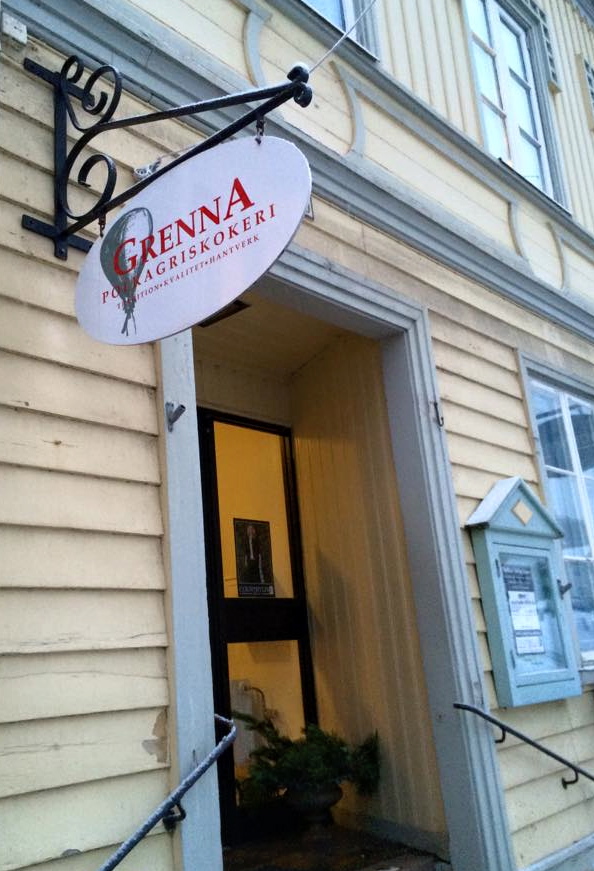 The original Grenna Polkagriskokeri started in 1859 is still in business today. Photo by Linda Efraimsson
The original Grenna Polkagriskokeri started in 1859 is still in business today. Photo by Linda Efraimsson -
In the mid-1950s, making polkagris became a small industry, with the candy being made by housewives in their homes and sold in all kind of stores. Eventually, bakers caught on that people liked to watch the production, and now all confectioneries in Gränna have a window for tourists to look through. They can see that only natural ingredients are used (sugar, vinegar, peppermint oil, butter and cream), even the colors are natural. And all the production is done by hand — there are no machines — from the mixing in the kettle to the wrapping in paper.
By the early 1970s, a blue- and yellow-striped polkagris gained interest. Though they were the colors of the Swedish flag and still had the peppermint taste, some critics thought it was scandalous. The colors ultimately proved popular, though, and now there are more than 15 different colors and many flavors, though only the red and white with peppermint keep the name polkagris — the others are candy sticks. There are even sugar-free sticks with just 120 calories. -
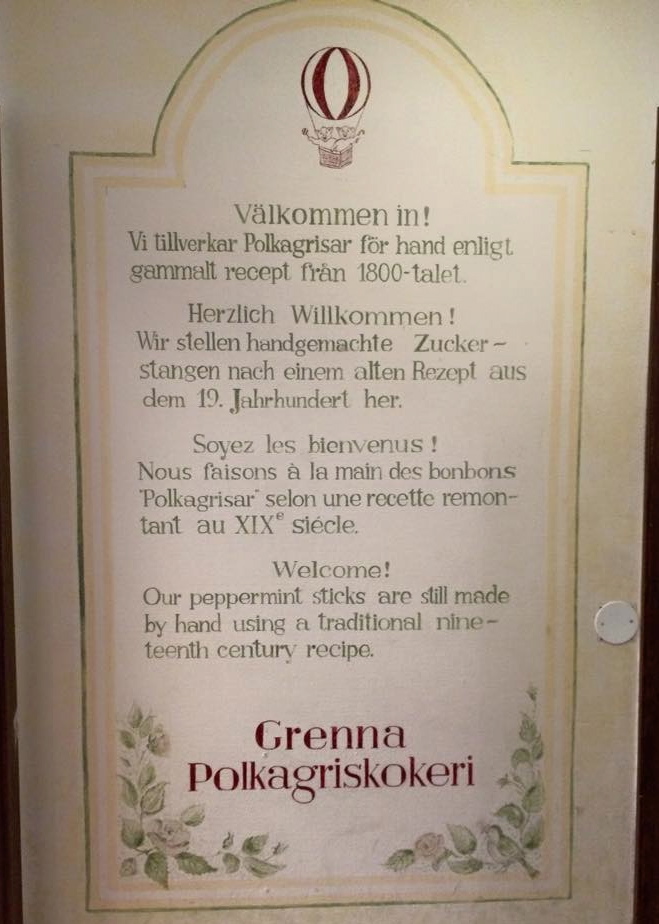 The popular tourist attraction welcomes visitors in several languages. Photo by Linda Efraimsson
The popular tourist attraction welcomes visitors in several languages. Photo by Linda Efraimsson -
There are at least a dozen shops producing the sweets in Gränna — each with many different flavors, including wild strawberry, violet, licorice and “Stockholm,” a blend of raspberry and salt licorice. And visitors can opt for a tour where they can make their very own polkagris to take home.
-
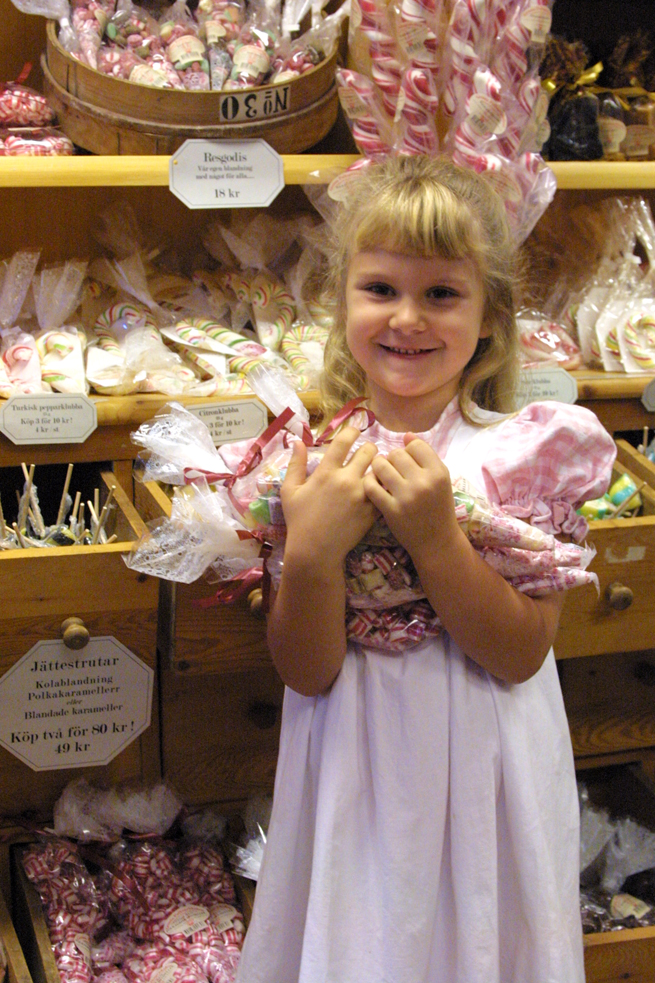 Photo: Martin Miller
Photo: Martin Miller -
The jury is still out on whether polkagrisar are the same as what Americans know as candy canes, but if you're lucky, you might find the candy sticks at a specialty store in the U.S. In 2008, the kokeri had a contract with Williams-Sonoma to sell in the United States, and there may be another American client in the works now, too. In the meantime, you'll just have to make sure a visit to Grenna Polkagriskokeri is on your itinerary next time you're in Sweden. And be sure to bring back plenty to share.
-
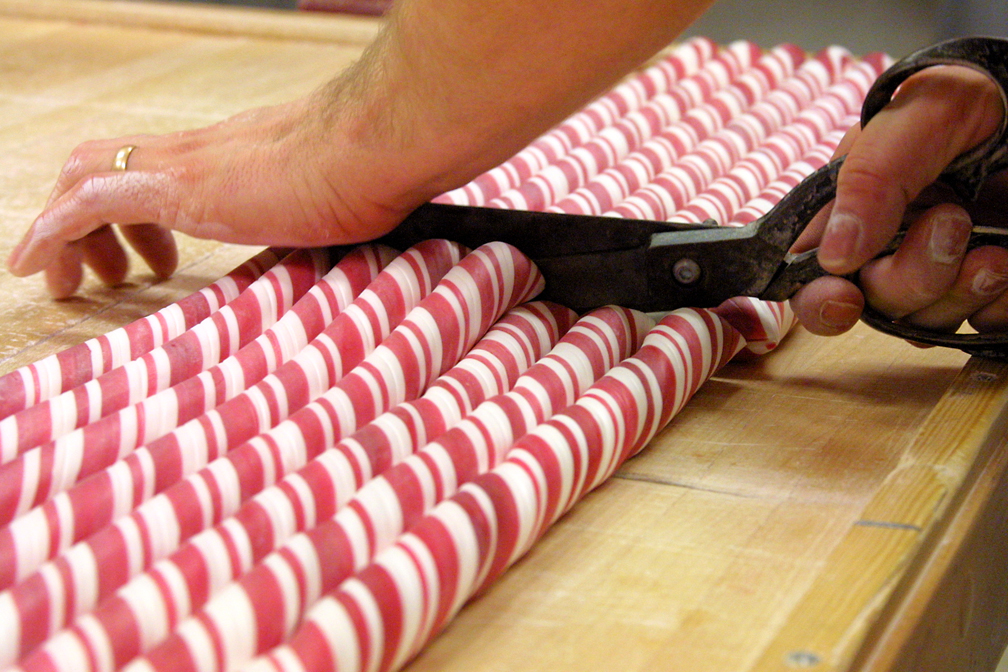 These red- and white-striped peppermint sticks may look like candy canes, but 160 years ago, a single mother in central Sweden started mass producing these sweets as “Polkagrisar.” And not much has changed since then ... except the ever-increasing number of fans. Photo: Martin Miller
These red- and white-striped peppermint sticks may look like candy canes, but 160 years ago, a single mother in central Sweden started mass producing these sweets as “Polkagrisar.” And not much has changed since then ... except the ever-increasing number of fans. Photo: Martin Miller -
By Amanda Olson Robison
-
For more info, see http://www.polkagris.com
-
-
-
